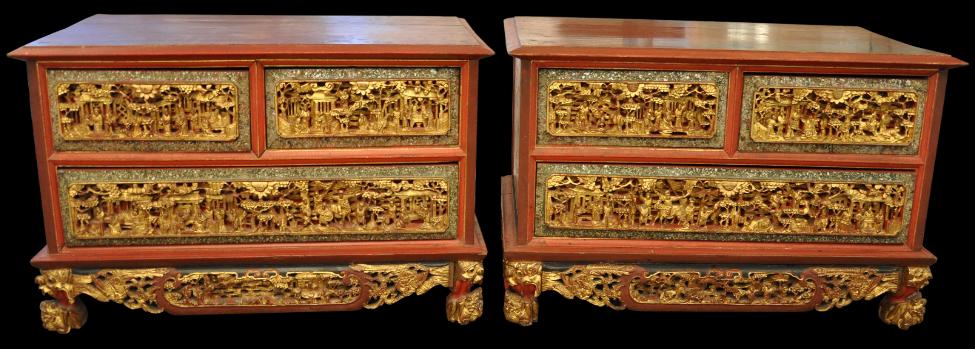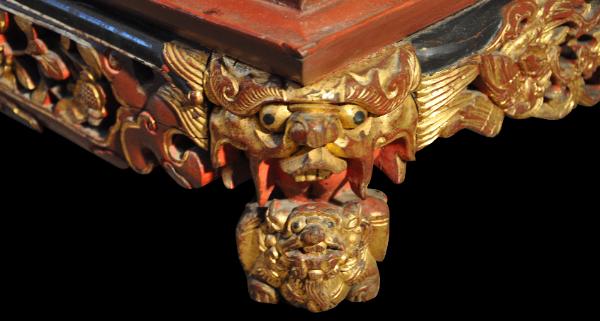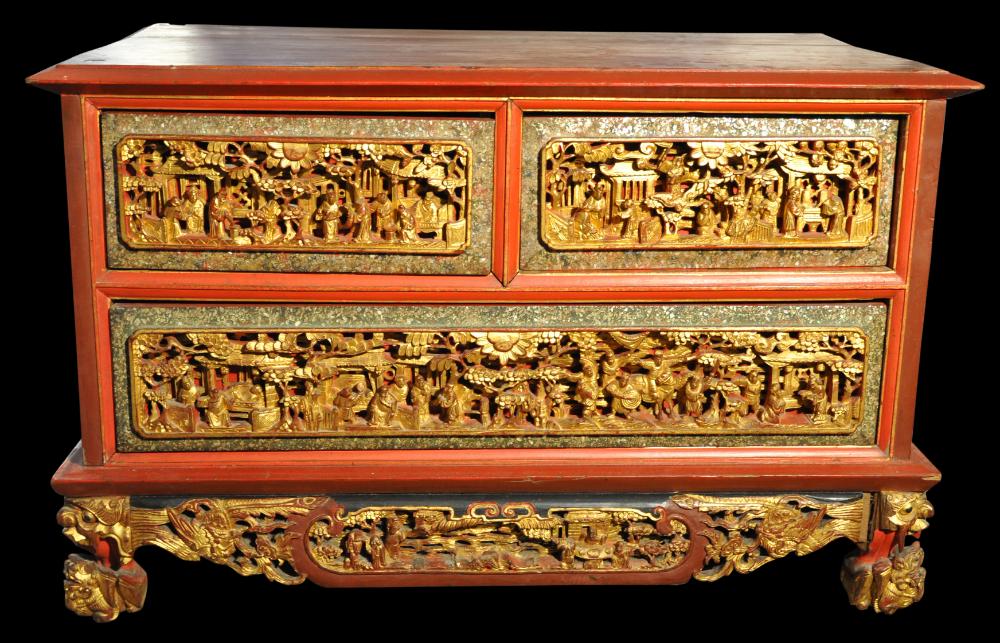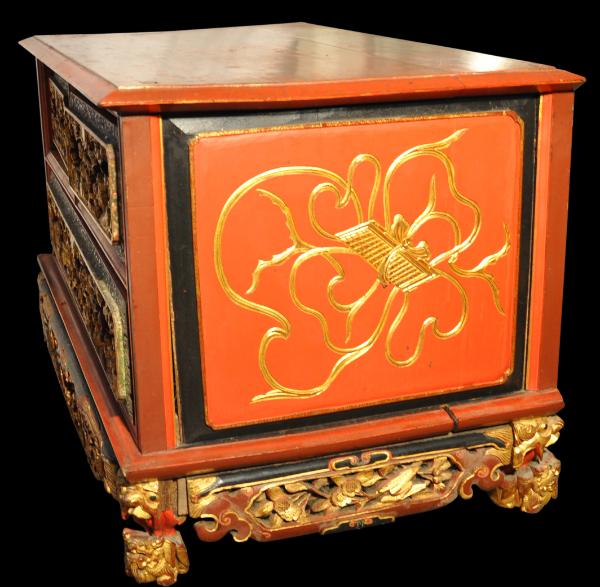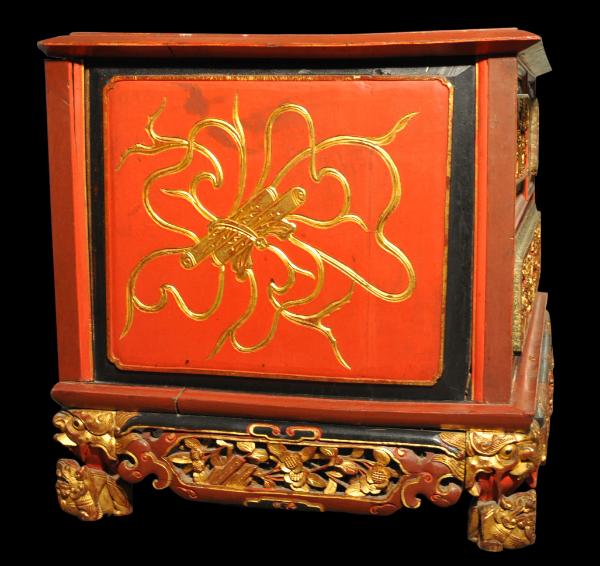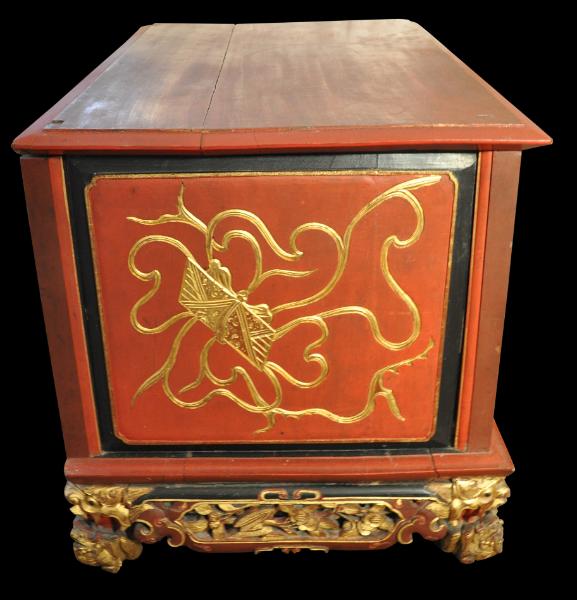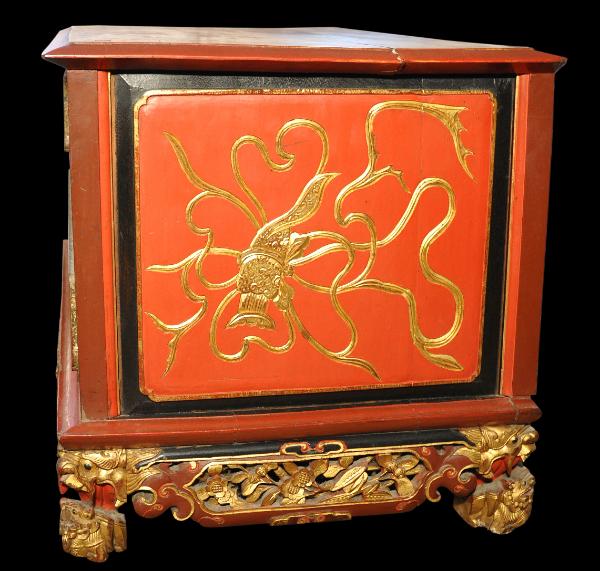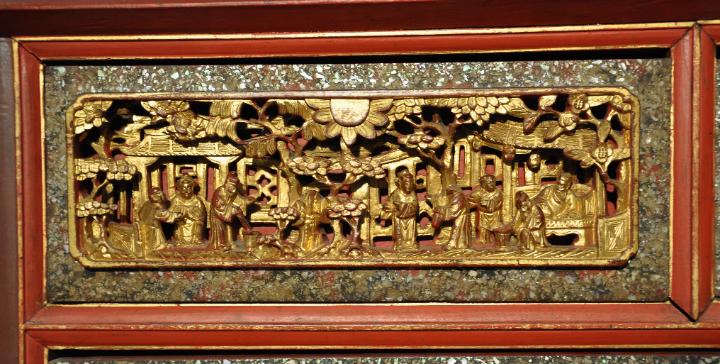
Straits Chinese Wedding Red and Gold Chests
Rare Pair of Straits Chinese ‘Red & Gold’ Wedding Chest-of-Drawers
Straits Settlements/China
late 19th century
height: 50cm (each),
length: 84cm, depth: 48.5cm
This superb pair of ‘red and gold’ wedding chest-of-drawers is principally noteworthy because it is a pair. Straits Chinese wedding chest-of-drawers are rare. Proper, matched pairs are all the more rare.
Ho Wing Meng in his book
Straits Chinese Furniture: A Collector’s Guide comments that such chest-of-drawers: ‘may also be included in the list of rare furniture of the red and gold variety. But I rather think that chests-of-drawers have always been scarce because their inclusion in the traditional bridal trousseau was optional and not obligatory: the more well-to-do Baba families might have insisted on having them, but the less well-off ones did not. For this reason, chests of drawers are not found in many old Baba homes.’
Each of the pair here comprises a chest with two top drawers and one larger bottom drawer, the fronts of which are elaborately carved in high relief with scenes of from one or another of the Chinese classics such as
The Romance of the Three Kingdoms, lacquered mostly in red with some brown and gilded. The carved panels are surrounded by frames of green that have been embedded with mica chips.
Each chest-of-drawers sits on four cabriole feet carved as dragon heads over
fo-dog type creatures, with elaborate gilded floral and foliage lower aprons to the front and sides which are similarly carved with classical scenes. The front lower aprons also are carved with pairs of phoenixes – a motif much beloved by the Straits Chinese for use in wedding paraphernalia.
The two sides of each chest are engraved and gilded with four of the symbols of the ‘Eight Precious Things’ (
Ba Bao).
Red and gold furniture was commissioned from artisans in southern China by wealthy Straits Chinese merchants in the Straits Settlements of Singapore, Malacca and Penang in the nineteenth and early twentieth centuries. The Straits Chinese (also known as the
babas and nonyas and also as the peranakan) were distinctive from most of the Chinese on the Malay peninsular at that time. Their families had been on the peninsular for at least several generations and often they were the product of intermarriage between local Chinese and Malay population. Their customs were a curious blend of English, Malay and Chinese customs. Weddings were very important. For these, furniture for the bridal chamber often was commissioned from China.
An example of a Straits Chinese wedding chest-of-drawers is illustrated in Ho (1994, p. 106).
The two chests were acquired in the UK and almost certainly have been in the UK since colonial times. They are in good, robust condition. There are some time-related losses to the detail of the carvings – some of the small characters have lost their heads for example. There are some shrinkage-related gaps to the main panels (although not as much as other extant examples), and there are some losses to the corner feet. But all the railings are present and original. Indeed, the chests are in no way composite or have replacement parts. Repair work would remedy any issues but may not be warranted: the rarity of a matched pair makes the two exceptional in any event, and the general profusion and detail of the work means that the losses are only apparent with close examination. The chests are stable and readily usable in their current state, and are free of any apparent restoration.
References
Ho, W.M., Straits Chinese Furniture: A Collector’s Guide, Times Books International, 1994.
Provenance
UK art market
Inventory no.: 1888
SOLD

